Topic Question Set
Q 1
:
A galvanometer has a coil of resistance with a full scale deflection at The value of resistance to be added to use it as an ammeter of range is [2024]
(2)
and
Q 2
:
A galvanometer of resistance when connected in series with measures a voltage of up to 10 V. The value of resistance required to convert the galvanometer into an ammeter to read up to 10 A is . The value of is [2024]
800
2
20
200
(3)
For voltmeter,
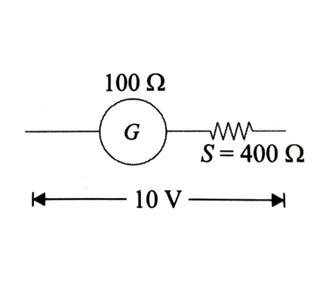
for ammeter

For ammeter
Let shunt resistance
Q 3
:
Three voltmeters, all having different internal resistances are joined as shown in figure. When some potential difference is applied across A and B, their readings are , and . Choose the correct option. [2024]
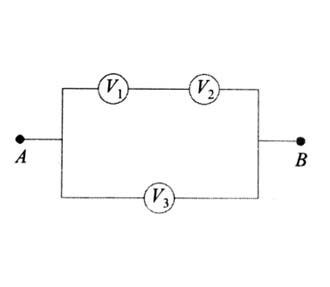

(4)
From
Q 4
:
A galvanometer having coil resistance shows a full scale deflection for a current of 3 mA. For it to measure a current of 8A, the value of the shunt should be: [2024]
(3)
Given
In case of conversion of galvanometer into ammeter.
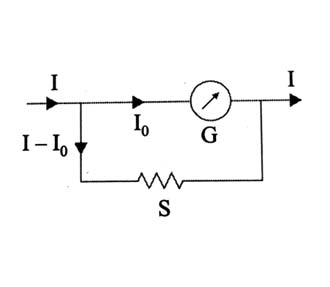
We have
Q 5
:
The deflection in moving coil galvanometer falls from 25 divisions to 5 divisions when a shunt of is applied. The resistance of galvanometer coil will be ____ [2024]
(2)
Let current/division.
Without shunt,

After applying shunt,
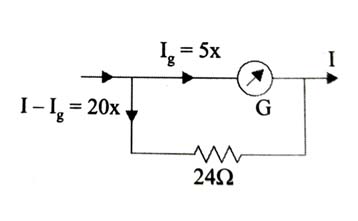
Q 6
:
A galvanometer has a resistance of 50 Ω and it allows maximum current of 5 mA. It can be converted into voltmeter to measure upto 100 V by connecting in series a resistor of resistance [2024]
5975
20050
19950
19500
(3)
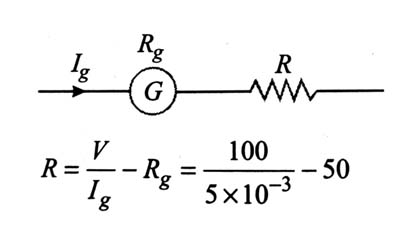
Q 7
:
In an ammeter, 5% of the main current passes through the galvanometer. If resistance of the galvanometer is G, the resistance of ammeter will be [2024]
(1)
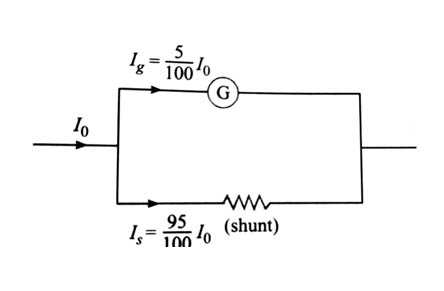
By using KVL
Q 8
:
In the given figure an ammeter A consists of a 240 coil connected in parallel to a 10 shunt. The reading of the ammeter is ______________ mA. [2024]
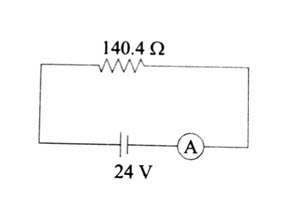

(160)

Q 9
:
To determine the resistance (R) of a wire, a circuit is designed below. The V−I characteristic curve for this circuit is plotted for the voltmeter and the ammeter readings as shown in figure. The value of R is .......... . [2024]
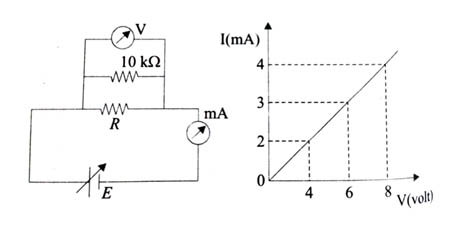

(2500)
The resistance of the circuit,
Equivalent resistance,
Q 10
:
In the given circuit, the current flowing through the resistance 20 is 0.3 A, while the ammeter reads 0.9 A. The value of is ________ . [2024]
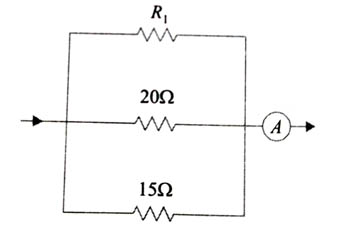

(30)
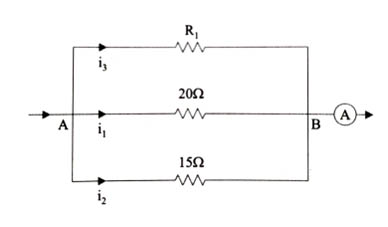
Given,
So,

